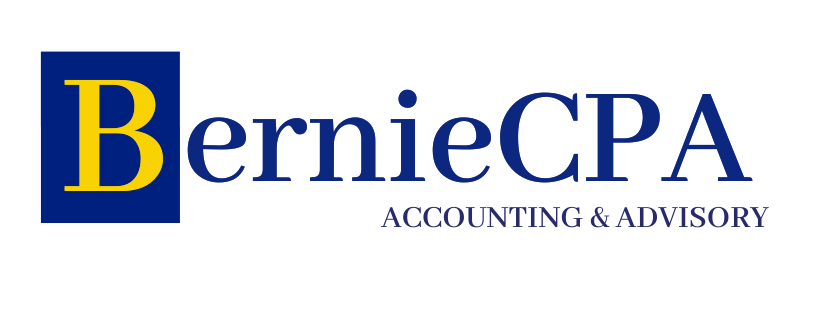Section 179 Made Simple: How to File for Tax Deductions and Save Big
Section 179 of the IRS tax code is a provision that allows businesses to deduct the full purchase price of qualifying equipment and/or software purchased or financed during the tax year. This deduction is designed to encourage businesses to invest in themselves by providing a financial incentive to make these purchases. The idea is that by allowing businesses to deduct the full cost of these purchases in the year they are made, it will stimulate economic growth and help businesses thrive.
To qualify for Section 179, the equipment or software must be purchased or financed and put into service in the same tax year that the deduction is being claimed. The deduction is limited to the amount of taxable income from the business, and any amount that exceeds this limit cannot be carried over to future years. Additionally, there are specific dollar limits on the total amount of the equipment or software that can be deducted under Section 179. For the 2021 tax year, the maximum deduction is $1,050,000, with a phase-out threshold of $2,620,000. It’s important to note that these limits are subject to change each year, so it’s crucial to stay up to date with the current regulations.
Eligible Expenses: What You Can Deduct Under Section 179
Under Section 179, businesses can deduct the full purchase price of qualifying equipment and/or software that is used for business purposes. This includes tangible personal property such as machinery, vehicles, computers, office furniture, and more. It also includes certain improvements to non-residential real property, such as roofs, heating, ventilation, and air conditioning property, fire protection and alarm systems, and security systems.
In addition to tangible personal property, businesses can also deduct the full purchase price of qualifying software. This includes off-the-shelf software as well as custom software that is specifically designed for the business. The software must be used in the business and not for personal use in order to qualify for the deduction. It’s important to keep in mind that not all software will qualify for Section 179, so it’s essential to consult with a tax professional to determine eligibility.
How to File for Section 179 Deductions: Step-by-Step Guide
Filing for Section 179 deductions involves several steps, but it can be relatively straightforward with proper planning and organization. The first step is to ensure that the equipment or software being deducted qualifies under Section 179. This means it must be purchased or financed and put into service in the same tax year that the deduction is being claimed. It’s also important to keep detailed records of the purchase and use of the equipment or software, as well as any financing agreements.
Once eligibility has been determined, the next step is to calculate the total amount of the deduction. This involves adding up the total cost of all qualifying equipment and/or software purchased during the tax year. It’s important to keep in mind that there are specific dollar limits on the total amount that can be deducted under Section 179, so it’s crucial to stay within these limits.
After calculating the total deduction amount, it’s time to file the appropriate forms with the IRS. This typically involves filing Form 4562, Depreciation and Amortization, along with your business tax return. It’s important to ensure that all information is accurate and up to date when filing these forms, as any errors could result in delays or potential audits.
Maximizing Your Savings: Tips for Getting the Most out of Section 179
There are several strategies that businesses can use to maximize their savings under Section 179. One of the most effective strategies is to plan purchases strategically in order to take full advantage of the deduction limits. By spreading out purchases over multiple years, businesses can avoid hitting the phase-out threshold and maximize their deductions each year.
Another strategy is to consider financing options for qualifying equipment and/or software. By financing these purchases, businesses can spread out the cost over time while still being able to deduct the full purchase price in the year they are made. This can help businesses conserve cash flow while still reaping the benefits of Section 179.
Additionally, businesses should consider consulting with a tax professional to ensure that they are taking full advantage of all available deductions and credits. A tax professional can help identify additional opportunities for savings and ensure that all forms are filed correctly and on time.
Common Mistakes to Avoid When Filing for Section 179 Deductions
When filing for Section 179 deductions, there are several common mistakes that businesses should be aware of in order to avoid potential issues with the IRS. One common mistake is failing to keep accurate records of equipment and/or software purchases and use. Without detailed records, it can be difficult to prove eligibility for the deduction in the event of an audit.
Another common mistake is failing to stay up to date with current regulations and limits on Section 179 deductions. These limits can change from year to year, so it’s crucial to stay informed in order to avoid exceeding the phase-out threshold or missing out on potential savings.
It’s also important to avoid filing forms with errors or omissions when claiming Section 179 deductions. Any mistakes on these forms could result in delays or potential audits, so it’s essential to double-check all information before filing.
Section 179 vs. Bonus Depreciation: Understanding the Difference
While Section 179 and bonus depreciation both offer tax incentives for businesses to invest in themselves, there are some key differences between the two provisions. Section 179 allows businesses to deduct the full purchase price of qualifying equipment and/or software in the year they are purchased or financed. Bonus depreciation, on the other hand, allows businesses to deduct a percentage of the cost of qualifying property in the first year it is placed in service.
One of the main differences between Section 179 and bonus depreciation is that bonus depreciation applies to new equipment only, while Section 179 applies to both new and used equipment. Additionally, bonus depreciation does not have a dollar limit on the total amount that can be deducted, while Section 179 does have specific dollar limits that can change from year to year.
It’s important for businesses to carefully consider which provision will provide the most benefit based on their individual circumstances. Consulting with a tax professional can help businesses determine which provision will offer the greatest tax savings.
The Benefits of Section 179: Why It’s Worth Taking Advantage of This Tax Deduction
There are several benefits to taking advantage of Section 179 deductions for businesses. One of the main benefits is that it provides a financial incentive for businesses to invest in themselves by purchasing new equipment and/or software. By allowing businesses to deduct the full purchase price in the year it is made, Section 179 helps stimulate economic growth and encourages businesses to thrive.
Another benefit is that Section 179 can help businesses conserve cash flow by allowing them to deduct the full purchase price of qualifying equipment and/or software without having to pay for it all upfront. This can make it easier for businesses to make necessary investments while still maintaining healthy cash flow.
Additionally, taking advantage of Section 179 can help businesses stay competitive by allowing them to invest in new technology and equipment that can improve productivity and efficiency. By taking advantage of this tax deduction, businesses can position themselves for long-term success and growth.
In conclusion, Section 179 offers significant tax benefits for businesses that invest in themselves by purchasing new equipment and/or software. By understanding how this provision works, what expenses are eligible for deduction, how to file for deductions, how to maximize savings, common mistakes to avoid when filing for deductions, understanding the difference between Section 179 and bonus depreciation, and recognizing the benefits of taking advantage of this tax deduction, businesses can make informed decisions about how best to leverage this provision for their financial benefit. With careful planning and strategic use of Section 179 deductions, businesses can position themselves for long-term success and growth while reaping significant tax savings along the way.


